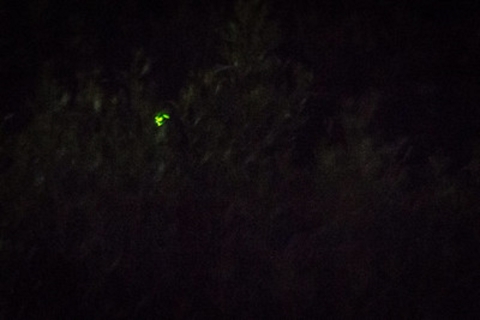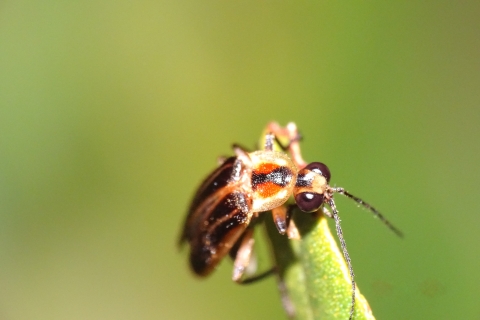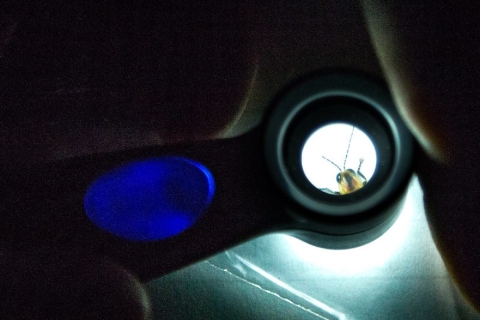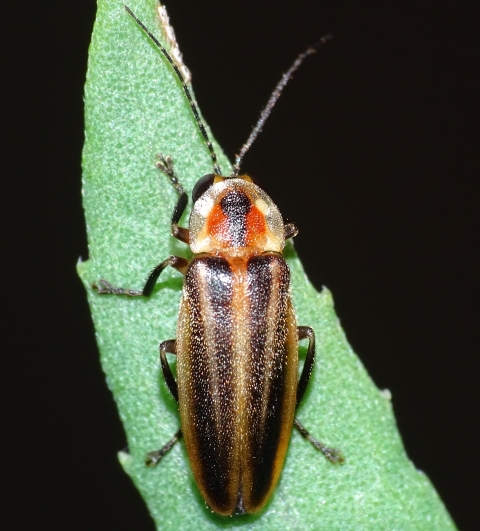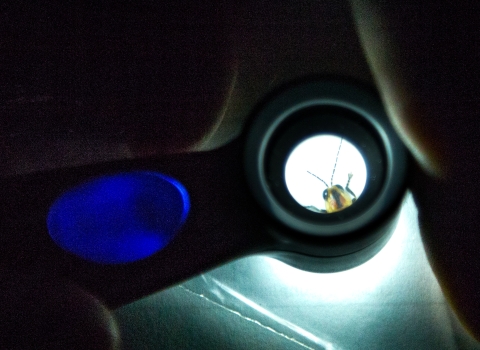Right after sunset on the coast of NASA’s Wallops Flight Facility in Virginia, green flashes of light in the darkness mystify anyone who sees them. To the untrained eye, the rhythmic double gleams of bioluminescence on the space agency’s land surely suggest the presence of extraterrestrial life.
As biologists inch closer to the swarms of light however, they realize these pea-sized critters are no aliens.
They sigh in relief at the revelation that the flashing lights are typical of an earthly critter named the Bethany Beach firefly.
With its unique mating dance, habitat and coloration, this insect is a natural wonder. But because of stressors like climate change climate change
Climate change includes both global warming driven by human-induced emissions of greenhouse gases and the resulting large-scale shifts in weather patterns. Though there have been previous periods of climatic change, since the mid-20th century humans have had an unprecedented impact on Earth's climate system and caused change on a global scale.
Learn more about climate change , it’s losing ground. To ensure future generations can be entranced by the firefly’s ephemeral glow, the U.S. Fish and Wildlife Service is proposing to protect this species under the Endangered Species Act.
Life is swale
Named after the Delaware town where it was discovered, the Bethany Beach firefly (Photuris bethaniensis) is endemic to shallow pools of freshwater between sand dunes on the Atlantic shoreline of Delaware, Maryland and Virginia. These wet areas called swales are also the firefly’s food sources where they likely find snails, slugs and soft-bodied invertebrates to munch on.
The species has a typical insect life cycle, beginning as an egg and progressing to the larval, pupal and adult stages. It is thought that the Bethany Beach firefly spends two years in the larval stage, burrowed into the swale’s soil layer, before it emerges as an adult in the summer and spends several weeks to a month or more looking for a mate.
The Bethany Beach firefly faces threats from habitat loss and fragmentation, invasive plants, sea level rise, climate change, pesticides and light pollution.
Male Bethany Beach fireflies give a double flash to females to attract a partner. Females emit a flash in response. This means individuals must be able to see each other’s flashes to find mates. If a site has too much unnatural light, as is typical in developed areas, the fireflies may not be able to see each other’s flashes and may not mate, leading to the species’ disappearance from the site.
With Bethany Beach firefly’s freshwater swale habitats typically one-to-five feet above sea level, increased frequency, intensity and duration of coastal storms — not to mention overall sea level rise — can cause saltwater to flood into them.
Surveying for signs of light
Jason Davis, Certified Wildlife Biologist ® at the Delaware Department of Natural Resources and Environmental Control Division of Fish and Wildlife, is responsible for Bethany Beach firefly surveys in the state. He has a tight survey window: Adult Bethany Beach fireflies are only active in the evening from mid-late June through late July and sometimes into early August.
Surveys begin about 35 minutes after sunset, when the fireflies start flashing. They remain active well into the night. Because biologists are just trying to determine if fireflies are present at a site, and they have multiple sites to get to, each survey lasts only 20 minutes or until they see a green flash – whichever comes first.
Sounds simple, but unpredictable environmental factors can make surveying trickier. Moon phase and light pollution can make it hard to see the fireflies. Bethany Beach fireflies are also not the only firefly species present in the swales. Since each firefly species has a distinctive flashing pattern, Davis and his team must be diligent in watching the flashes to be certain they belong to a Bethany Beach firefly.
The Bethany Beach firefly sites in Virginia were discovered by biologists with the Virginia Natural Heritage Program, who were trained by Davis to identify the double flashes. It was their initial surveying that pointed Davis to sites like Wallops Island, which is unlike typical Bethany Beach firefly habitat in Delaware and Maryland; its interdunal swales are inconspicuous under sprawling stands of common reed and were likely heavily manipulated by humans. The swales are also very close to roadways and water-control structures.
Though only two Bethany Beach fireflies were confirmed in-hand at Wallops Island Flight Facility during the most recent surveys, there were three sites confirmed there, one with a relatively high abundance of the species. Surveys conducted by biologists in other states may reveal more fireflies and habitats.
Davis has been conducting Bethany Beach firefly surveys annually since 2019, but he admits there is still much we don’t know about them. The larvae have never been seen or described in literature. What they eat for their two years underground remains a mystery, though we infer that their diet is the same as other Photurid species, which means snails, slugs and other soft-bodied invertebrates. The adults have never been seen eating, so it’s speculated they don’t eat and are meant only to mate.
As a state biologist, Davis is responsible for insects such as bees, hoverflies, butterflies, moths, tiger beetles, fireflies, dragonflies, and damselflies, as well as marine mammals and sea turtles. Despite this colorful and charismatic array of species, he says his favorite assignment is the Bethany Beach firefly.
“It’s tough work, but it’s the most rewarding and challenging,” Davis explained. “Finding new Bethany Beach firefly locations is probably my favorite part.”
He’s looking forward to doing larval surveys in fall and is working with the state Division of Parks and Recreation to mitigate light pollution in one swale that is a known Bethany Beach firefly site.
We need Bethany Beach fireflies
Bethany Beach fireflies don’t boast as much benefit to humans as bees or bats — at least not yet — but Davis says it’s still our job to protect them for future generations.
“As species around the world are being endangered by human activities and being pushed to extinction, it’s our future disappearing in front of our eyes,” he said. “If we can save one bug from extinction, we are working to protect our future. Children will inherit this future from us. We need to protect these fireflies for them.”
He also reminisced on his childhood watching fireflies and experiencing the juvenile wonder of watching their nature lightshow. He says this experience can help ensure the future of conservation.
“Kids enjoy fireflies. And when they experience the flying glow, and chase and catch one, they are more connected to nature, which helps them appreciate it and hopefully want to protect it.”
Studying fireflies can have implications for humans, too. Within a firefly’s lantern, proteins and enzymes react to produce the shining light fireflies are known for, a form of bioluminescence. This production of light is 100% efficient as it emits no heat. Scientists working on renewable energy sources may learn how to synthesize this process by studying fireflies.
With applications where firefly bioluminescence can be used in detecting cancer and spoiled food, Davis says it is imperative that we protect Bethany Beach fireflies, and other species, so we can make new discoveries about ourselves.
“If we can advance cancer research by studying a bug, that’s amazing and opens a lot of doors.”


